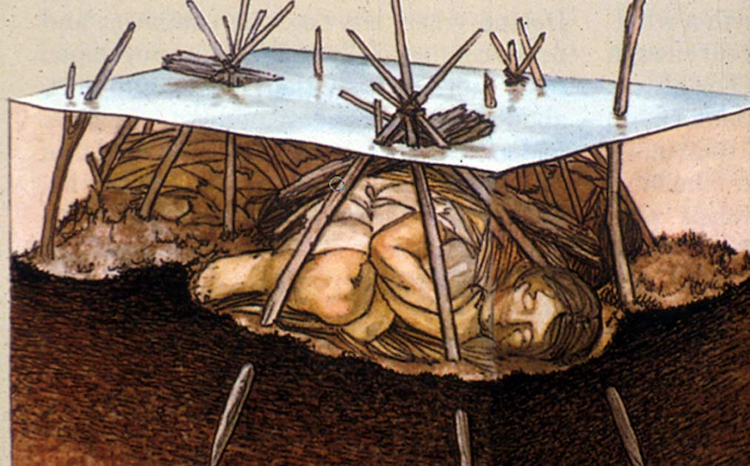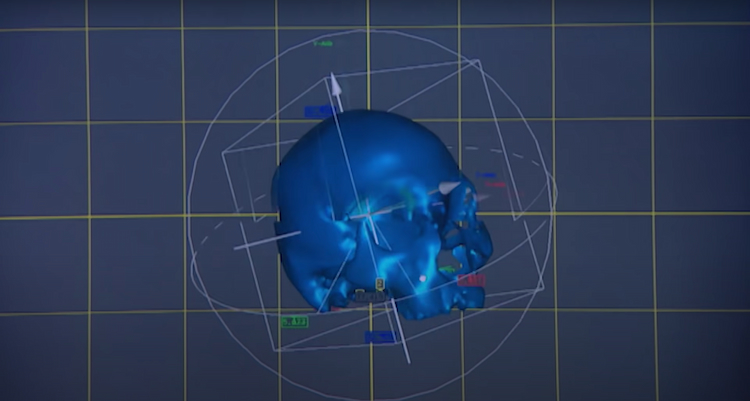Imagine stepping back in time 8,000 years, to a world vastly different from the one we know today. In the heart of Florida, hidden beneath the tranquil waters of a pond, lies a remarkable archaeological treasure trove that is rewriting the history of ancient America. Welcome to Windover Pond, a captivating underwater cemetery that has captured the attention of scientists and historians alike.
This ancient burial site, predating even the Great Pyramids of Egypt, offers a rare glimpse into the lives and customs of the people who inhabited the region millennia ago. The exceptionally well-preserved remains and artifacts found in Windover Pond have shed new light on the mysterious origins and lifeways of these early inhabitants, challenging long-held assumptions about the nomadic nature and cultural sophistication of America’s ancient peoples.
In this blog post, we will delve into the fascinating story of Windover Pond, exploring the remarkable discoveries that have emerged from this unique archaeological site and the insights it provides into the lives and legacy of the people who called it home.
The Discovery of Windover Pond

Windover Pond, located just east of Orlando, Florida, was first discovered by chance in 1982 during a routine construction project. What began as a routine excavation quickly turned into an extraordinary archaeological find, as workers uncovered a submerged burial ground filled with well-preserved human remains and artifacts.
When archaeologists from the Florida State University began investigating the site, they were astonished by the remarkable state of preservation of the remains and the sheer number of individuals buried there. In total, they uncovered the remains of 168 individuals, making Windover Pond one of the largest and most significant ancient burial sites ever discovered in North America.
The Exceptional Preservation of the Windover Bog Bodies
One of the most remarkable aspects of Windover Pond is the exceptional preservation of the human remains found within it. Unlike the typical bog bodies found in Europe, which are often desiccated and fragmented, the Windover bog bodies are remarkably well-preserved, with even the delicate brain tissues intact.
Researchers believe that the unique environmental conditions of the Windover sinkhole, including its slightly acidic water and high mineral content, played a crucial role in the preservation of these ancient remains. The peat-rich soil and cool, anaerobic environment of the pond effectively “pickled” the bodies, preventing the normal processes of decomposition and allowing scientists to study them in unprecedented detail.
This remarkable preservation has provided researchers with a treasure trove of information about the lives and customs of the people buried in Windover Pond. From analyzing the DNA and isotopic signatures of the remains to examining the artifacts and burial practices, scientists have been able to piece together a detailed portrait of these ancient inhabitants and their world.
Unveiling the Genetic Secrets of Windover Pond

One of the most significant aspects of the Windover Pond discovery is the wealth of genetic information it has provided about the people who lived there. The exceptional preservation of the remains has allowed researchers to extract and analyze ancient DNA from the bodies, revealing remarkable insights into the origins and genetic makeup of these early Americans.
When scientists first began examining the Windover bog bodies, they were surprised to find that the DNA samples contained two previously unidentified genetic variants, dubbed X6 and X7. These variants were later found to be present in a number of modern and ancient Native American populations, suggesting that they were likely part of the original genetic makeup of the first inhabitants of the Americas.
Further genetic analysis has revealed that the individuals buried in Windover Pond were closely related, with many sharing common genetic markers and microsatellite lengths. This suggests that the pond was used as a communal burial ground by a single, closely-knit population over the course of several centuries.
The genetic evidence from Windover Pond has also challenged long-held assumptions about the origins and migration patterns of the first Americans. According to geneticist Andrew Merriwether, the DNA data indicates that the first inhabitants of the Americas likely came from a single population in Asia, rather than multiple waves of migration as previously believed. This provides valuable insights into the complex history of human settlement in the Americas.
Challenging Assumptions about Ancient American Lifeways

The discoveries at Windover Pond have also challenged many of the prevailing assumptions about the lifeways and cultural sophistication of ancient Americans. For decades, the dominant view held that the earliest inhabitants of the Americas were largely nomadic, with little in the way of structured social organization or long-term care for the disabled and elderly.
However, the Windover Pond burials have revealed a very different story. Among the remains, archaeologists found the skeletons of a young boy with spina bifida, who had clearly been cared for and supported by his community for 16 years, as well as an elderly woman who also required long-term care. These findings suggest that the people of Windover Pond were not simply nomadic hunter-gatherers, but rather had developed complex social structures and a deep sense of communal responsibility.
Furthermore, the sheer number of individuals buried in the pond, as well as the elaborate burial practices and the presence of numerous artifacts, indicate that these people had a rich cultural and spiritual life that was far more advanced than previously believed. The Windover Pond discovery has truly upended our understanding of the earliest inhabitants of the Americas and their ways of life.
The Historical Significance of Windover Pond

The Windover Pond site is not just an extraordinary archaeological find; it is also a site of immense historical significance. At 8,000 years old, the Windover Pond burials predate even the ancient Egyptian pyramids, making it one of the oldest and most important archaeological sites in North America.
The wealth of information and insights that have emerged from Windover Pond have the potential to rewrite much of what we know about the early history and development of human civilization in the Americas. The exceptional preservation of the remains and artifacts, combined with the genetic data and the insights into the cultural and social practices of these ancient people, have provided an unparalleled window into a world that has long been shrouded in mystery.
Windover Pond is truly a remarkable and irreplaceable archaeological treasure, offering a rare and invaluable glimpse into the lives and legacies of the people who once called this region home. As we continue to explore and study this remarkable site, we can expect to uncover even more secrets and insights that will deepen our understanding of the ancient history of the Americas and the remarkable resilience and adaptability of the human spirit.
Conclusion
In the tranquil waters of Windover Pond, a remarkable story of human history and resilience has been preserved for millennia. This ancient underwater cemetery, with its exceptionally well-preserved remains and artifacts, has captivated the attention of scientists and historians alike, offering a rare and invaluable glimpse into the lives and lifeways of the earliest inhabitants of the Americas.
The discoveries at Windover Pond have challenged long-held assumptions about the cultural sophistication and origins of these ancient peoples, revealing a complex and interconnected society that cared for its most vulnerable members and left an indelible mark on the course of human history. As we continue to explore and study this remarkable site, we can expect to uncover even more secrets and insights that will deepen our understanding of the human experience and the enduring legacy of the people who once called Windover Pond home.
